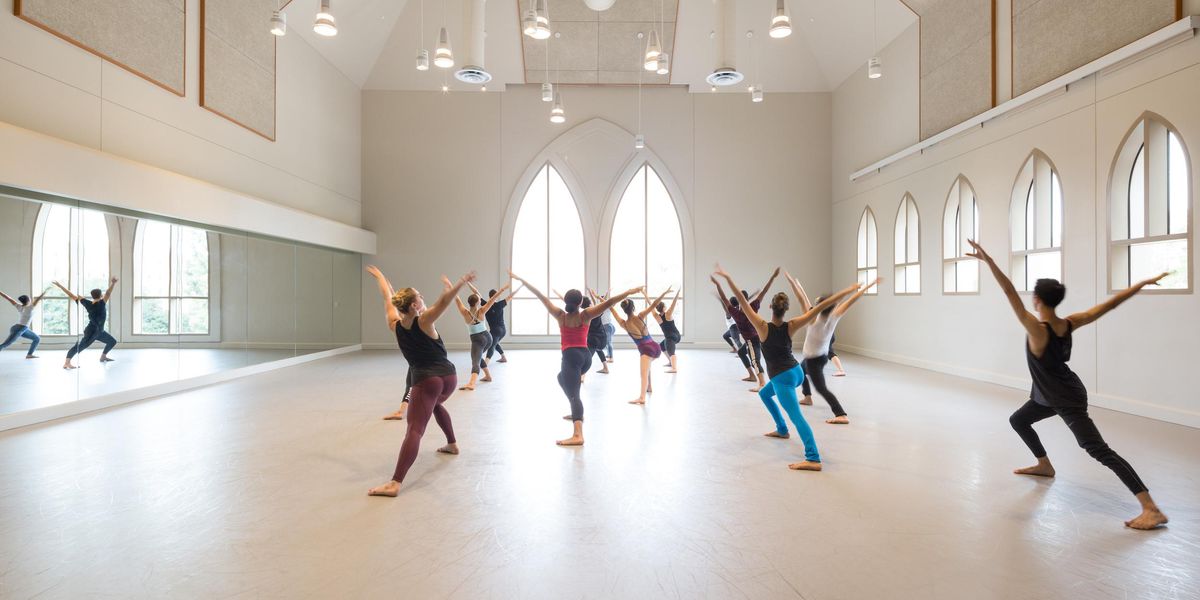On Broadway: Step Right Up
In Drood, Warren Carlyle takes audiences and cast back to the heyday of English music halls.
When theater historians list the European elements—opera, clog dancing, operetta—that fed into the all-American form that we now know as the Broadway musical, they always include the boisterous popular entertainments of the English music hall. Most of us know the rousing songs and limber dances of this kind of variety show, similar to American vaudeville, only second hand—from old movies like Limelight and The 39 Steps. But this season, there are two Broadway productions making direct use of the idiom, and both—Chaplin and The Mystery of Edwin Drood—were choreographed by Warren Carlyle.
At left: Victorian vamp:Chita Rivera does a star turn as the show’s mysterious Princess Puffer. Photo by Andrew Eccles, Courtesy
Drood.
Not that he’s any kind of expert, even if he was born in Britain. At 40, he’s way too young to have experienced music hall’s glory days. And his own early background was in ballet, not the jaunty routines he’s referencing in these shows. In Chaplin (“On Broadway,” Oct.), which he also directed, the music-hall sequence reflects Charlie Chaplin’s formative years as a child performer in London. Drood, which brings Chita Rivera back to Broadway as the opium-den proprietress Princess Puffer, doesn’t have a music-hall sequence; it is a music-hall sequence. The Tony-winning 1985 show, by Rupert Holmes, takes the audience onstage and backstage as a Victorian music-hall troupe performs its version of Charles Dickens’ final, unfinished novel, The Mystery of Edwin Drood.
Like any choreographer working in a historical genre, Carlyle did his research. And at times, he found himself working on the two shows simultaneously. But he says there was no danger that the steps or styles of the musicals would overlap. “English music hall is quite coarse in some ways—it’s not necessarily overly sophisticated or overly complicated,” he says. “These are regular people who have regular jobs. They go, and in the evenings they sing a song—they’ll sing a song dressed as a vicar or they’ll sing a love song in a beautiful hat. The event is the big hat with flowers, not necessarily the performance.”
That’s why, for the Roundabout Theatre’s revival of Drood, he says, “I’m trying not to Broadway-ize it too much, not to make it too razzmatazz. I hope it will still entertain and still satisfy, but I’m trying not to do all the Broadway tricks. I’m using very few steps; I’m using very simple steps; I’m not cleaning or detailing the choreography as much as I normally would.”
Authenticity is not the only reason Drood has a gritty feel. “I’d love you to think that if you got on the stage, you actually might be able to join in,” he says. “I want the choreography to be accessible to the audience.” That audience plays a crucial part in The Mystery of Edwin Drood: At the end of the show, it’s the audience that settles the mystery Dickens left unresolved, by voting on which of the characters committed the murder at the center of the plot. “The show can’t work without audience participation,” Carlyle says.
It’s not that the ensemble and the miraculous Rivera, who made her Broadway debut in 1953 in Call Me Madam, won’t have any work to do. “There’s a lot of movement in the show—you’ll be aware of dance. And there’s this opium-den ballet that I just loved creating. But there isn’t the kind of partnering or lifts or pyrotechnics that you would expect in 2013 on Broadway. No one’s going to jump into the splits. Here I’m much more reliant on character and storytelling.”
With Chaplin, he says, “I took a great deal of artistic license. The truth of the music hall is much messier, but I made a conscious choice to really choreograph that and give it a style. I wanted to do it through Charlie’s lens.” Carlyle also worried that a more truthful kind of dance would clash with the stylization of the show’s black-and-white-movie palette.
As if choreographing two Broadway shows in one season were not challenging enough, Carlyle was also preparing a third, based on the 1983 movie comedy A Christmas Story. Set in a post-Depression small town in Indiana, it’s “the exact opposite” of Carlyle’s other projects. “We have giant dance numbers,” he says, “and a lot of flash.” There’s a Busby Berkeley–type kick line, a children’s number set in a pretend speakeasy, and a Wild West fantasy as well.
It’s also part of a remarkable juggling act—and not the low-rent, music-hall kind. How is Carlyle pulling it off? “I have a lot of really good help,” he says.
Sylviane Gold writes on theater for
The New York Times.




